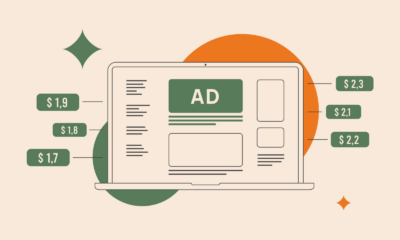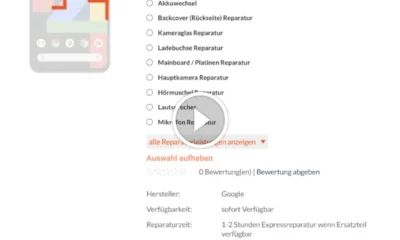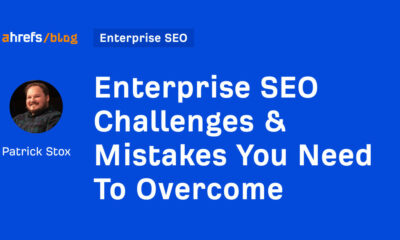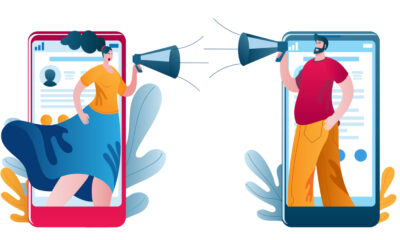MARKETING
How To Fix Your Landing Page Conversion Mistakes
You notice traffic picking up on your landing page. You eagerly wait for the weekly report to see a corresponding increase in conversions.
It arrives, and you discover the conversion rate dropped.
Why didn’t more traffic lead to more conversions?
Many reasons exist, but to identify the one(s) relevant to your page, take a step back and analyze the root cause.
Conversion rates drop as landing page traffic picks up? It’s time to investigate, says @Lakshmi_writes via @CMIContent. Click To Tweet
Here are five of the most common pitfalls to consider and some ideas on how to rectify them:
1. People visiting your website aren’t your target customers
Think about it. Some people are visiting your landing page, but they don’t convert because they aren’t looking for what you offer.
To get to the bottom of this possibility, check the source(s) that leads your visitors to the landing page. One of two problems likely exists.
Search engines
If much of your traffic comes from search engine results, your page’s content, especially its keywords and key phrases, could be the top suspect.
Google and other search engines like categorize and rank your content differently than how you intended. Let me break it down with this example:
Let’s assume you create a landing page designed to convert visitors interested in your air conditioner maintenance services. The target keyword is “air conditioner maintenance.” You include product names and key phrases mentioning buying options.
When the search engines crawl the page, they interpret it as a page selling air conditioners. People who click on the ranking result intend to buy air conditioners. Instead, they find content about how to maintain them after they buy.
Now you can see why the visitors who land on the page don’t convert.
If search engines interpret your #content with an intent different than yours, search-directed visitors likely won’t convert, says @Lakshmi_writes via @CMIContent. Click To Tweet
How can you check to see if that’s the problem? Find out the keywords for which your site’s pages are ranking. The keyword analysis will identify your top-ranking keywords. Do they match your content and business intentions?
This process is especially helpful for businesses that serve customers in their region. You need people from the location where you sell to visit your website. You don’t care about the same type of audience from other locations. In this case, you need the keywords relevant to your location.
HANDPICKED RELATED CONTENT:
Online ads
You want people to click on your ad. In doing so, you may go overboard with promises you can’t fulfill.
Let’s assume your brand sells food to a diet-focused audience. The ad includes the text: “Guilt-Free Snacking – We Mean It!” The health-conscious prospect is excited and clicks the ad. After landing on the page, it would just take a few seconds to figure out the “guilt-free” snack contains significant calories. Not only does the calorie count induce guilt, it induces the visitor to leave the landing page without converting.
Though an enticing promise in an ad can lead to a spike in your landing page traffic, it will not yield high conversions, and worse, it could make visitors distrust your brand long into the future.
Keep your ads honest and straightforward. It’s OK to add some garnishes and sugary words if you want, but never cross the line and add details to mislead people.
2. Your content doesn’t hook visitors
The headline and opening line matter a lot since it’s usually the first thing people read when they land on your page. It needs to hook visitors and keep them interested. Advertising legend David Ogilvy says it all in this quote:
On the average, five times as many people read the headline as read the body copy. When you have written your headline, you have spent 80 cents out of your dollar.
His thinking is reinforced by a stat from Copyblogger: On average, eight out of 10 people will read headline copy. Only two out of 10 will read the rest.
You need that headline to be compelling, magnetic, and tempting enough for your audience to read further.
To convert landing page traffic, first write a compelling, magnetic, and tempting headline, says @Lakshmi_writes via @CMIContent. Click To Tweet
Of course, you also can’t neglect the impact of the rest of the content, as it all contributes to the likelihood of a visitor converting.
Just think about what you generally do when landing on a website. You read the headline and you’re intrigued. You read more of the content. However, you probably don’t read every word from top to bottom. You read the first few lines, scroll down, read the headings, go to the last section, and may scroll back up again. If it doesn’t relate closely to what you want to know, you leave unconverted. It’s as simple as that.
People typically don’t read websites; they scan them. Here are a few tips to keep your scanning visitors hooked:
- Make every single heading matter.
- Use an easy-to-read font size.
- Use a combination of header tags, italics, and font colors to differentiate the content and bring attention to specific points.
- Keep the tone casual and conversational. Make the audience feel as if you are talking directly to them.
- Identify pain points the visitors likely are experiencing.
- Highlight a few ways your brand aims to solve them and include testimonials.
HANDPICKED RELATED CONTENT:
3. The design doesn’t do justice to the content
Yes, content is important. But the website design is at least if not more important. A bad user experience could harm your conversion funnel even when your content is perfectly on target.
Go back to your web designer with information so they can work to design a more attractive and useful page. Give them links to customer profiles, previous successful converting landing pages, etc. Then, they can work with the page’s content creator to better design a page that functions well for visitors.
TIP: Create two or more landing pages to test CTA positions, color schemes, etc., to see what converts the best.
4. Your landing page takes a long time to load
You could have the most relevant content in the best-designed package, and sometimes visitors leave without seeing the whole page. No one has the patience to wait for 10 seconds for the page to load.
A long loading time also can contribute to poor search engine rankings. (Go to Google Analytics and check out your site speed to see the current speed and loading time.)
If it’s more than three seconds, reduce the size of images and videos to increase the pace. You can find other options to save time in this Moz article about increasing page speed.
HANDPICKED RELATED CONTENT:
5. Pop-ups get in the way
Irritating your visitors with pop-ups they don’t want to see is a sure way to drive them away. You frustrate them more when those pop-ups have tiny close buttons that are impossible to find. Visitors click on the corners, on the outside of pop-ups, and wherever they can to close it. When nothing works, they simply leave.
Let’s be honest. As much as people hate pop-ups, you still might benefit from them. The best solution is to create pop-ups that are less likely to annoy visitors. Create them in a medium-size with crisp and attention-worthy content and an easily visible close button.
Don’t bombard visitors with 10 pop-ups. Use no more than three at the most. If you think you need more, rotate the pop-up promotions or send them on a time-appropriate basis.
Stick your landing page conversions
When you get good traffic on a landing page but the visitors don’t convert, it’s time to investigate. Explore the root cause – likely related to your content, design, or user experience – and fix it immediately. Then, you can see your conversions rise higher in proportion to the landing page traffic.
Cover image by Joseph Kalinowski/Content Marketing Institute
!function(f,b,e,v,n,t,s)
{if(f.fbq)return;n=f.fbq=function(){n.callMethod?
n.callMethod.apply(n,arguments):n.queue.push(arguments)};
if(!f._fbq)f._fbq=n;n.push=n;n.loaded=!0;n.version=’2.0′;
n.queue=[];t=b.createElement(e);t.async=!0;
t.src=v;s=b.getElementsByTagName(e)[0];
s.parentNode.insertBefore(t,s)}(window, document,’script’,
‘https://connect.facebook.net/en_US/fbevents.js’);
fbq(‘init’, ‘1432232210459613’);
fbq(‘track’, ‘PageView’);



















You must be logged in to post a comment Login